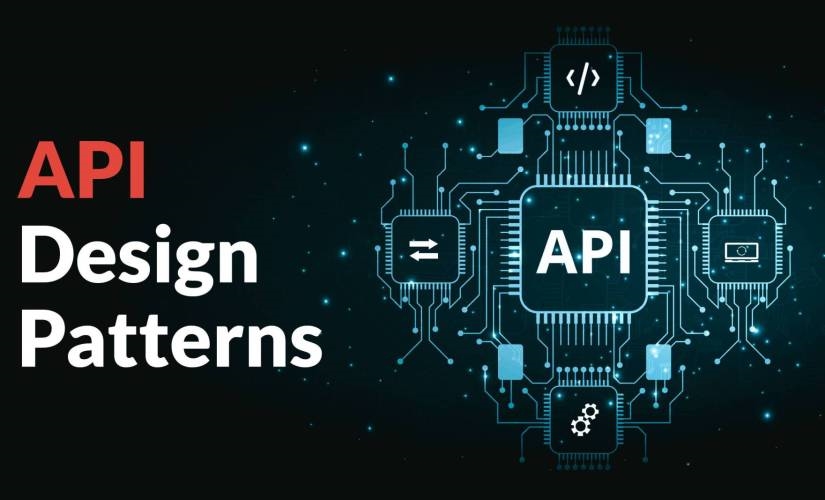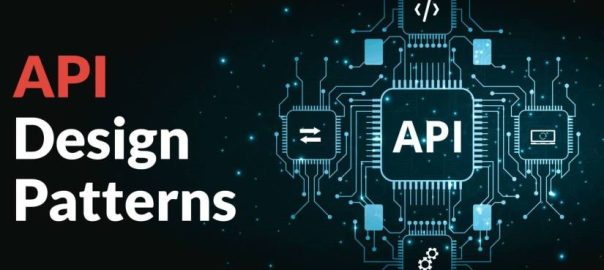API Design Patterns: Best Practices for Building Resilient APIs

Introduction
API design patterns are essential for creating reliable, scalable, and reusable code. This post explores the best practices and design principles for building APIs that are easy to use, maintain, and extend.
API Design Patterns: A Quick Overview
APIs serve as contracts that define communication between applications, services, and components. API design patterns provide best practices, specifications, and standards for building reliable and user-friendly APIs. These patterns can solve common API problems and be customized to fit specific needs.
Types of API Design Patterns
- RESTful API
- Uses HTTP methods for resource interaction
- Supports caching and scalability
- Works well for CRUD operations
- Enables stateless communication between client and server
- Compatible with various programming languages and frameworks
2. RPC API
- Utilizes Remote Procedure Calls to interact with a remote server
- Requires a protocol or API definition like Protobuf or gRPC
- More network-efficient than RESTful API
- It can be challenging to implement and maintain
3. GraphQL API
- Enables clients to request specific data
- Provides a single endpoint for requests
- Reduces the number of required requests for data retrieval
- Can be complex to implement and may require additional tooling and libraries
4. SOAP API
- Uses a messaging protocol for structured information exchange
- Compatible with various programming languages and frameworks
- Supports more complex operations than RESTful API
- It can be challenging to implement and maintain
5. Hypermedia API:
- Includes links between resources for dynamic discovery and navigation
- Enhances API flexibility and adaptability
- May require additional tooling and libraries
- It can be challenging to implement and maintain
6. Event-driven API
- Sends notifications to clients on specific events
- Reduces the need for repeated polling for updates
- Useful for real-time applications
- It can be challenging to implement and maintain
7. Message Queue API:
- Enables asynchronous message sending and receiving
- Provides reliable and scalable message processing
- Useful for distributed systems
- May require additional infrastructure and tooling
The choice of API design pattern depends on project needs and system architecture. RESTful API suits simple CRUD operations, while GraphQL handles complex queries. RPC API and SOAP API can be more efficient for specific functions but require more complexity. Hypermedia API, event-driven API, and message queue API cater to specific systems and applications but may need additional tooling and infrastructure.
REST API Design Patterns
REST (Representational State Transfer) API design patterns follow best practices and guidelines for web services.
- Resource-Based: Organizes API endpoints around resources representing system entities.
- CRUD (Create, Read, Update, Delete): Defines the four basic operations for a resource.
- HATEOAS (Hypermedia as the Engine of Application State): Includes hyperlinks in API responses for resource discovery and navigation.
- Filter and Pagination: Implements filtering and pagination for efficient data retrieval.
- Versioning: Provides different API versions to accommodate changes without breaking existing clients.
The above REST API design patterns help create simple, scalable, and easy-to-maintain APIs.
Understanding REST API Design: 6 Key Constraints Every Engineer Must Know
Designing a REST API requires awareness of key constraints defining API characteristics and capabilities:
- Client-Server Architecture: Separates client and server responsibilities for scalability and flexibility.
- Statelessness: Each request contains the necessary information, and the server maintains no session state.
- Cacheability: Designs API to take advantage of caching for improved performance.
- Layered System: Designs API as a layered system for flexible functionality management.
- Uniform Interface: Establishes standard interface using HTTP methods for CRUD operations and consistent data formats.
- Code on Demand (Optional): Allows transfer of executable code from server to client for added functionality and flexibility. Not commonly used in RESTful APIs.
Understanding these constraints helps in designing a RESTful API that is scalable, manageable, and adheres to best practices.
RESTful API Best Practices
RESTful APIs have become the standard for building scalable, flexible, and maintainable web services. To build a successful RESTful API, consider the following best practices:
- Follow the REST architectural style: Adhere to the constraints of the REST architectural style, ensuring consistency, reliability, and ease of understanding.
- Use HTTP methods correctly: Utilize the appropriate HTTP methods (GET, POST, PUT, DELETE) for the corresponding actions on resources.
- Use resource URIs: Define resource URIs that are unique, consistent, and devoid of implementation details.
- Use hypermedia to link resources: Incorporate hypermedia formats like HAL, JSON-LD, or Siren to provide links between resources, enabling clients to navigate the API without relying on implementation details.
- Employ versioning: Include versioning mechanisms, such as version numbers in URIs or HTTP headers, to support API changes without breaking existing clients.
- Implement authentication and authorization: Secure the API using authentication and authorization mechanisms like OAuth 2.0, which authenticates clients and controls access to resources, ensuring the API’s security.
- Error handling: Implement proper error handling to provide informative error messages when errors occur. Use appropriate HTTP status codes to indicate the type of error, and include error messages in the response body.
By following the above-mentioned best practices, you can create a RESTful API that is consistent, scalable, secure, and easy to use. However, it’s essential to also be aware of common pitfalls and challenges when designing RESTful APIs.
Common Pitfalls to Avoid
- Overusing the POST method: Avoid using the POST method for all operations. Instead, utilize the appropriate HTTP methods (GET, POST, PUT, DELETE) according to the semantics of the operation.
- Poor resource naming: Choose meaningful and consistent names for your resources that accurately represent the entities they represent.
- Lack of versioning: Neglecting to incorporate versioning in your API can lead to compatibility issues and breaking changes for existing clients.
- Inconsistent error handling: Ensure that error responses are standardized and follow proper HTTP status codes, providing meaningful error messages to clients.
- Overcomplicating the API: Keep your API design simple and intuitive. Avoid unnecessary complexity that can make it difficult for developers to understand and use.
- Inadequate documentation: Provide comprehensive documentation for your API, including clear explanations of endpoints, request/response formats, authentication mechanisms, and any specific requirements.
Conclusion
Designing a robust and effective API is essential for modern software development. By understanding API design patterns, following best practices, and avoiding common pitfalls, you can create APIs that are reliable, scalable, maintainable, and easy to use.
RESTful APIs, with their adherence to the REST architectural style, offer a flexible and standardized approach to building web services. By leveraging the power of HTTP methods, resource URIs, hypermedia, versioning, authentication, and error handling, you can create APIs that meet the needs of developers and provide a seamless experience for end-users.
Remember to document your API thoroughly, provide clear examples, and ensure consistent and meaningful error handling. With these considerations in mind, you’ll be well on your way to building robust APIs that enable effective communication between applications, services, and components in today’s interconnected digital landscape.
The post API Design Patterns: Best Practices for Building Resilient APIs appeared first on ReadWrite.
(38)
Report Post




